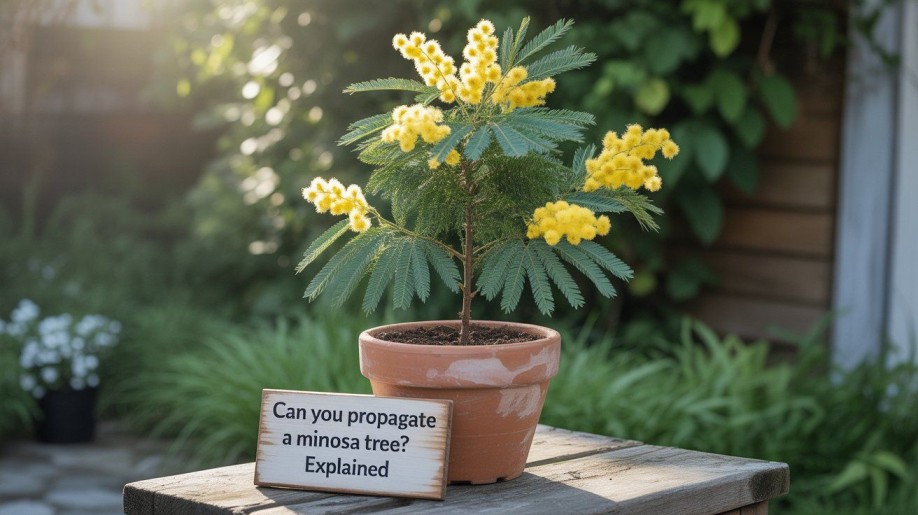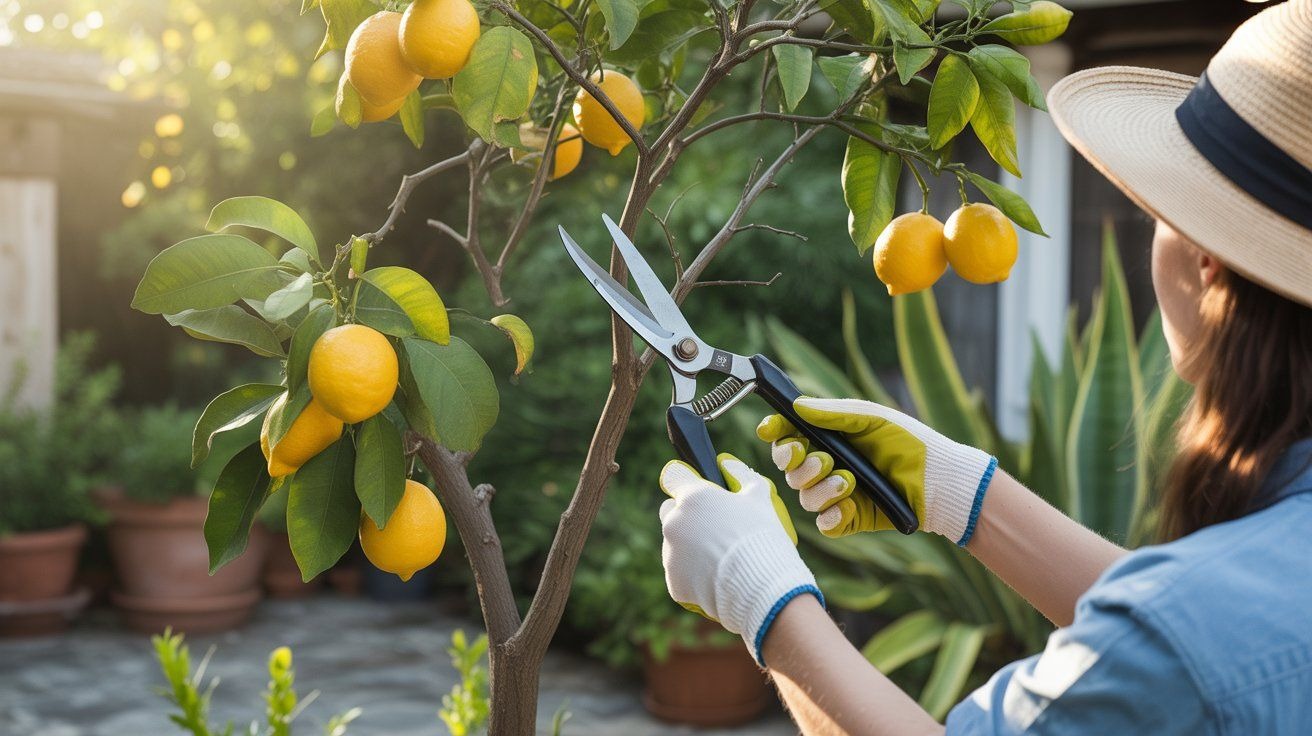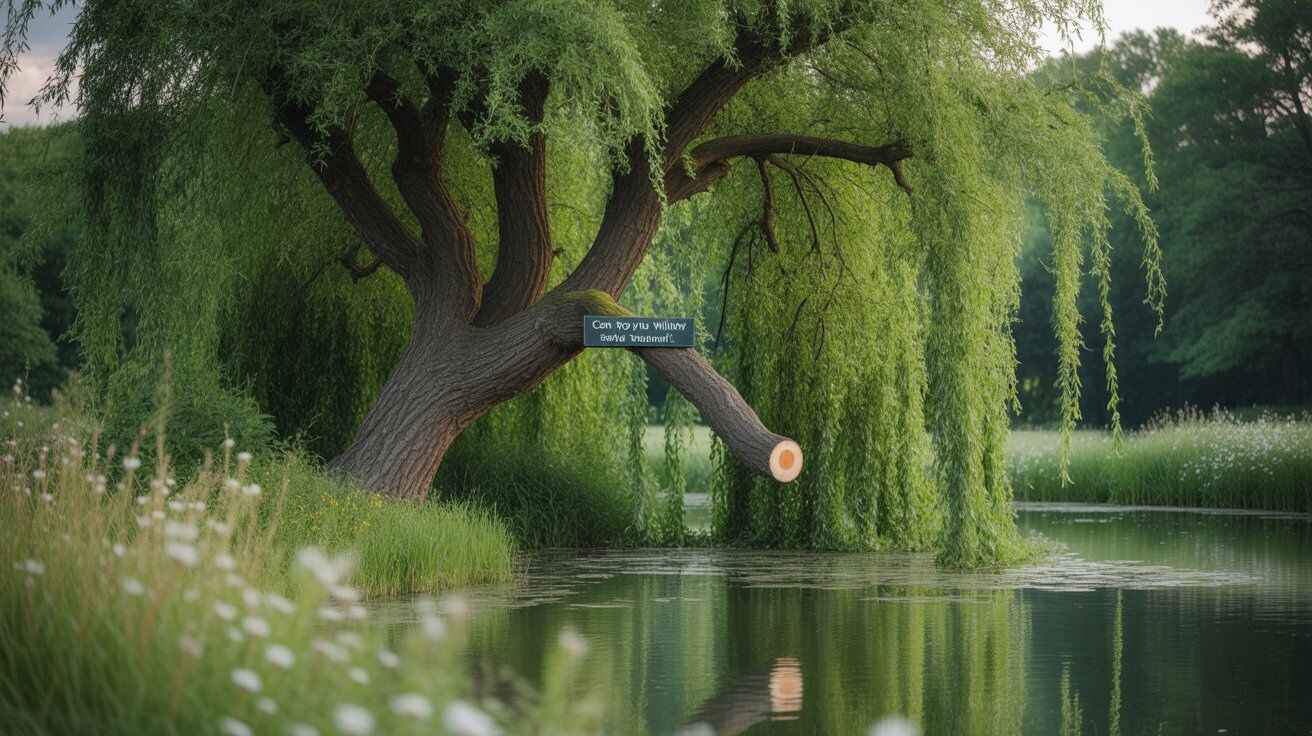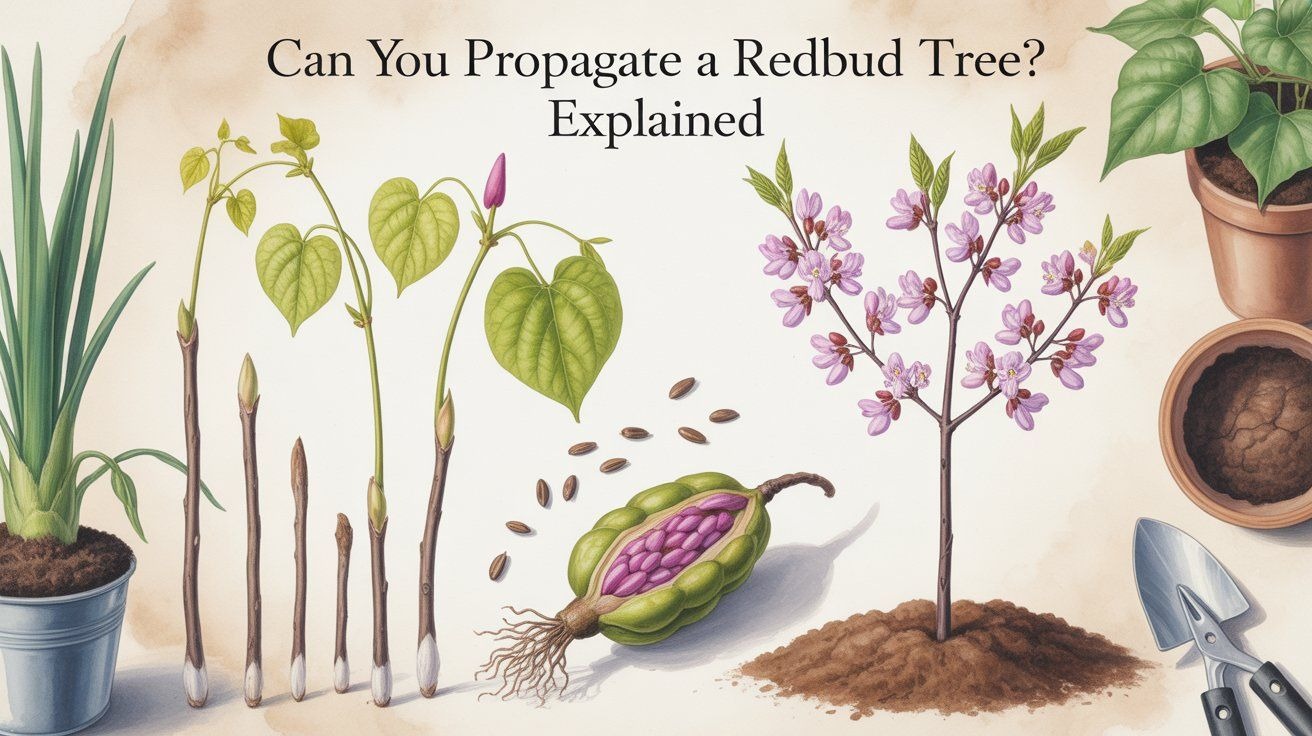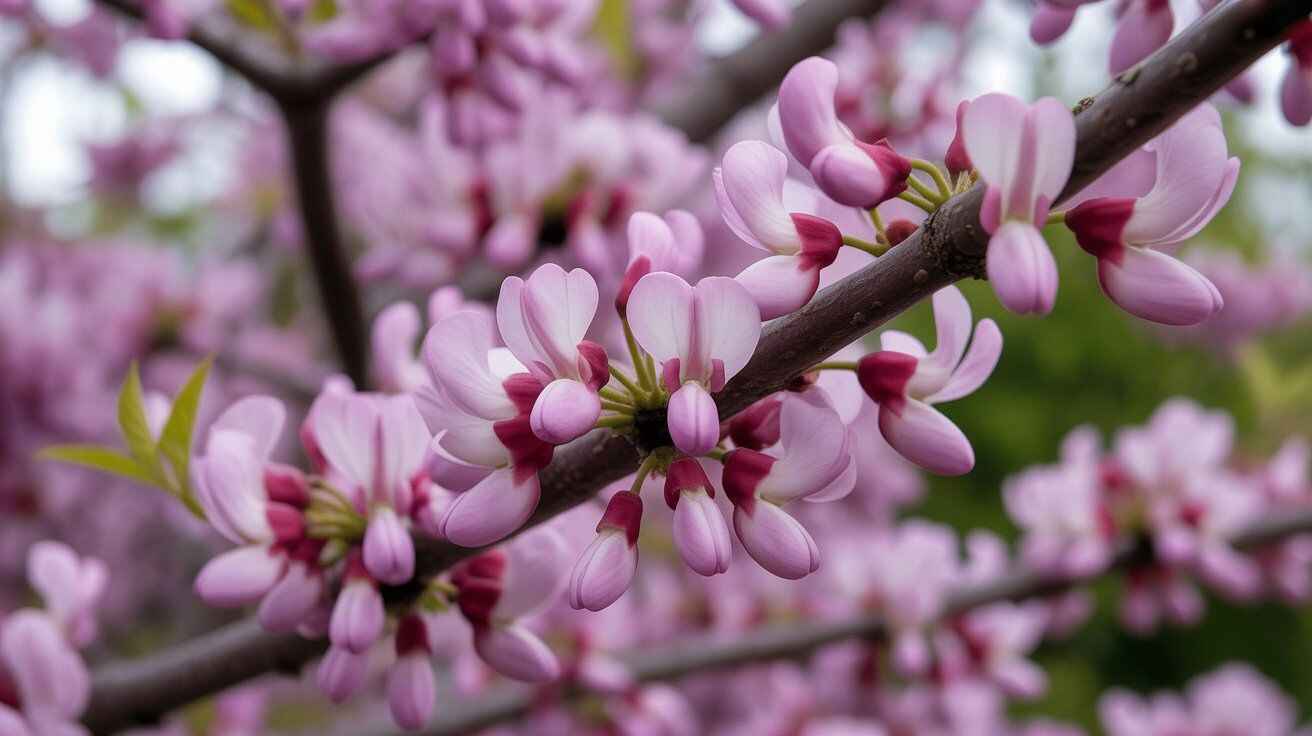Discover how to propagate a mimosa tree! Step-by-step tips on using seeds or cuttings to create new vibrant mimosa trees.
Why Propagate a Mimosa Tree?
Gardeners often ask why they should propagate a mimosa tree rather than buying new plants. Propagation allows you to preserve unique traits, ensuring new trees bloom just like the parent. It’s also cost-effective and lets you expand your garden or share plants with friends.
Additionally, propagation can rejuvenate older trees and increase survival rates compared to seed-grown plants. By mastering propagation techniques, you can grow healthy, thriving mimosa tree specimens reliably.
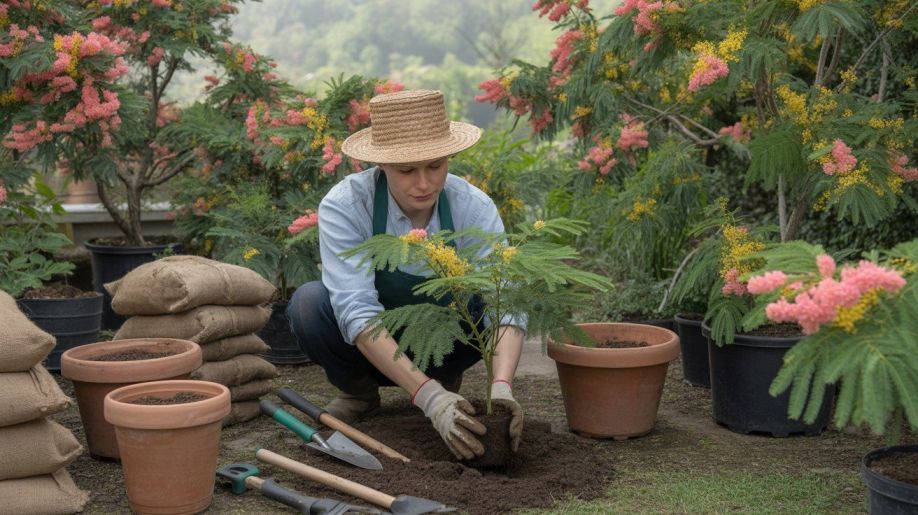
Best Time & Conditions for Propagation
The ideal period to propagate a mimosa tree depends on the method. For softwood or semi-ripe mimosa cuttings, late spring to early summer is best, as the tree’s growth is active and rooting is faster. Seeds should be sown after scarification in warm conditions to encourage germination.
Air layering works well in spring when sap flow is strong. Choosing the right season and maintaining consistent moisture and warmth ensures your young mimosa tree establishes successfully.
Propagation by Cuttings
| Step | Action | Tip / Details | Expected Result |
|---|
| Select Cutting | Choose healthy semi-ripe or softwood branches | Trim to 4–6 inches | Strong starting material for propagation |
| Apply Rooting Hormone | Dip cut ends in rooting hormone | Encourages faster root growth | Increases success rate |
| Plant in Soil | Use well-draining potting mix | Avoid waterlogged conditions | Prevents rot and supports root formation |
| Maintain Humidity & Moisture | Keep soil consistently moist, high humidity | Mist if needed, avoid overwatering | Promotes healthy root development |
| Monitoring | Check cuttings weekly | Watch for mold or pests | Early detection prevents failure |
| Transplant | Move to larger pot after roots form | Ensure proper drainage | Healthy young mimosa tree ready for growth |
Growing Mimosa Trees from Seeds
You can also propagate a mimosa tree using seeds, though this method takes longer to produce flowering trees. Start by collecting mature seeds and scarifying them to break the hard seed coat. Soak the seeds in warm water overnight before planting in a well-draining soil mix.
Keep the soil consistently moist and place containers in a warm, bright location. While seed-grown trees may vary from the parent, they develop strong roots and a healthy mimosa tree over time.
Air Layering Method for Mimosa Trees
Air layering is a reliable way to propagate a mimosa tree while keeping the branch attached to the parent. Start by wounding a healthy branch and wrapping it with moist sphagnum moss, then cover it with plastic to retain humidity.
Roots develop at the wounded site over several weeks. Once well-established, the new plant can be cut and transplanted. This method often results in stronger young plants and a higher survival rate for your mimosa tree.
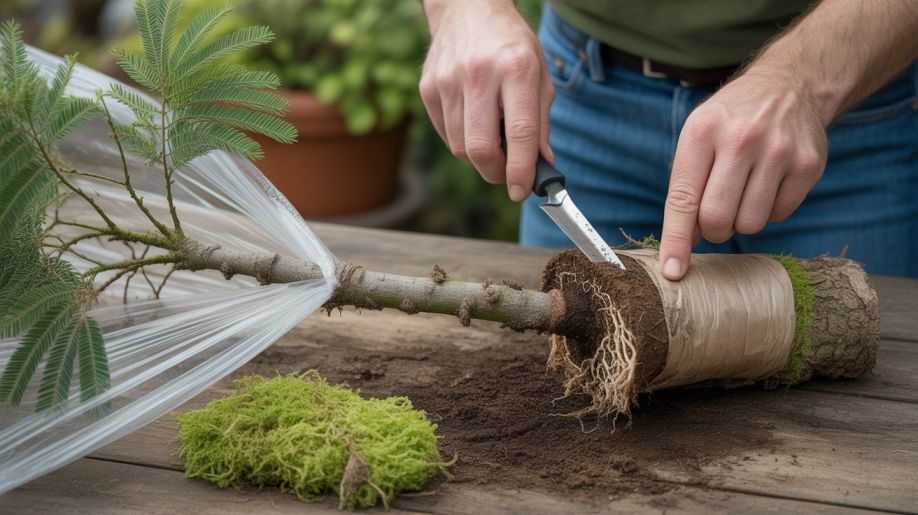
Common Mistakes in Mimosa Propagation
When you propagate a mimosa tree, common mistakes can reduce success. Overwatering cuttings or air-layered branches can lead to root rot, while under-watering slows root development. Using unhealthy or weak branches, skipping rooting hormone, or planting in compacted soil also decreases success rates.
Timing is crucial; cuttings taken too early or too late may fail. By avoiding these pitfalls and following proper techniques, you can ensure your young mimosa tree thrives and establishes strong roots for long-term growth.
Frequently Asked Questions
Q1: Can you propagate a mimosa tree indoors?
Yes, but you’ll need controlled humidity and bright light to encourage rooting.
Q2: What is the easiest method to propagate a mimosa tree?
Seeds are simple, but cuttings and air layering produce faster-growing plants.
Q3: How long do mimosa cuttings take to root?
Typically 4–8 weeks depending on temperature and moisture.
Q4: Do mimosa trees grow true from seed?
Not always—seedlings may differ from the parent mimosa tree.

Jhanzaib Khan, with over 50 years of dedication to nature and tree conservation, is a leading authority in the world of trees and environmental care. From his early years exploring forests to guiding communities in sustainable tree planting, Jhanzaib has combined hands-on experience with a lifelong passion for the environment. He specializes in tree species identification, tree care, forest management, and environmental awareness. His insights have been featured in multiple nature blogs, workshops, and local conservation projects.

